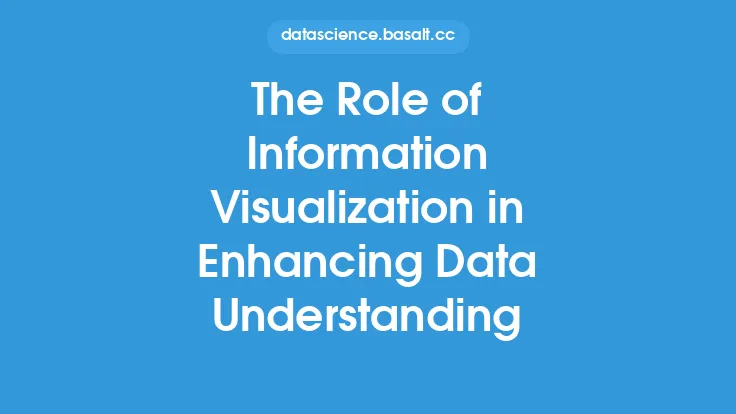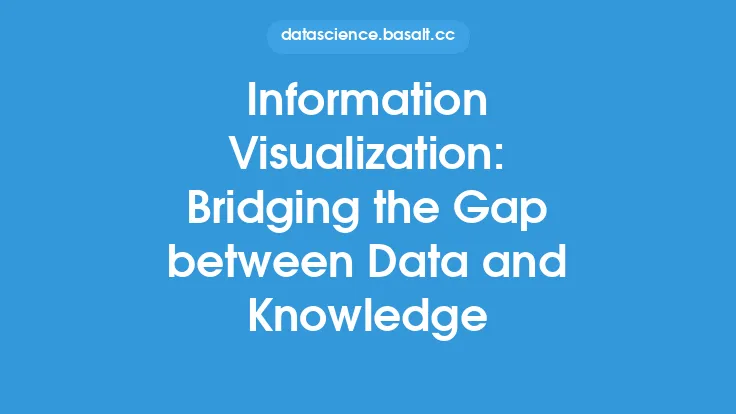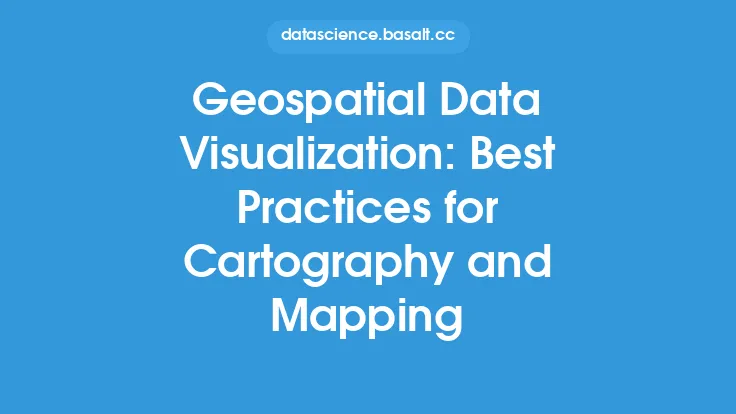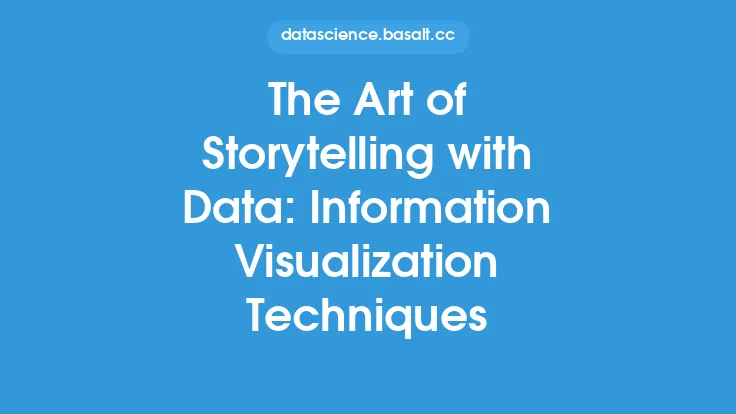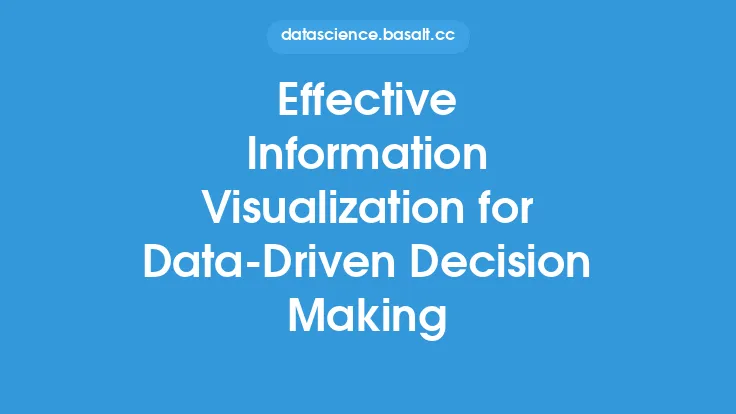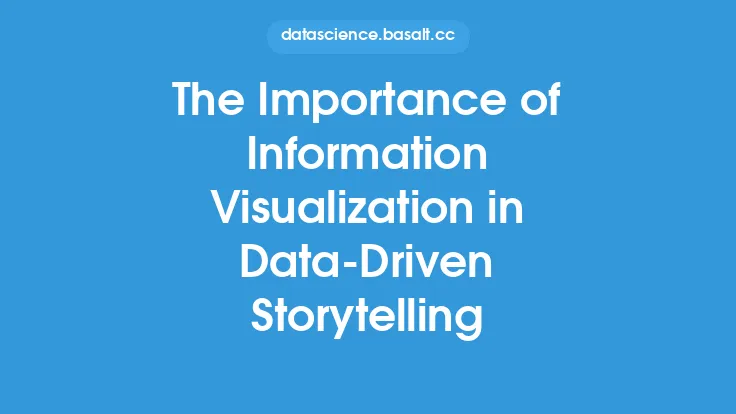The process of information visualization is a crucial aspect of data exploration and discovery, as it enables users to gain insights and understanding from complex data sets. Information visualization is a subfield of data visualization that focuses on the use of interactive and dynamic visual representations to facilitate the exploration and analysis of data. This approach allows users to identify patterns, trends, and relationships within the data, and to gain a deeper understanding of the underlying structures and mechanisms.
Introduction to Information Visualization
Information visualization is a multidisciplinary field that draws on techniques and methods from computer science, statistics, psychology, and design. The goal of information visualization is to create interactive and dynamic visualizations that allow users to explore and analyze complex data sets in a intuitive and meaningful way. This is achieved through the use of a variety of visualization techniques, including scatter plots, bar charts, heat maps, and network diagrams, among others. By providing an interactive and dynamic interface, information visualization enables users to ask questions, explore hypotheses, and refine their understanding of the data.
Key Concepts in Information Visualization
There are several key concepts that underlie the practice of information visualization. One of the most important is the idea of data mapping, which refers to the process of assigning visual properties to data values. This can include properties such as color, size, shape, and position, among others. Data mapping is a critical aspect of information visualization, as it allows users to see patterns and relationships within the data. Another key concept is the idea of interaction, which refers to the ability of users to manipulate and explore the visualization in real-time. This can include techniques such as zooming, panning, filtering, and sorting, among others. Interaction is essential for information visualization, as it enables users to ask questions, explore hypotheses, and refine their understanding of the data.
Techniques for Information Visualization
There are a variety of techniques that can be used for information visualization, including both traditional and innovative methods. Some common techniques include scatter plots, bar charts, and heat maps, which are often used to display numerical data. Network diagrams and tree maps are also commonly used, particularly for displaying hierarchical and relational data. More innovative techniques include the use of interactive 3D visualizations, virtual reality, and augmented reality, which can provide a more immersive and engaging experience for users. Additionally, techniques such as clustering, dimensionality reduction, and regression analysis can be used to identify patterns and relationships within the data.
Tools and Technologies for Information Visualization
There are a variety of tools and technologies that can be used for information visualization, including both commercial and open-source options. Some popular tools include Tableau, Power BI, and D3.js, which provide a range of visualization options and interactive features. Other tools, such as Matplotlib and Seaborn, are specifically designed for use with Python and provide a high degree of customization and control. Additionally, technologies such as HTML5, CSS3, and JavaScript can be used to create custom and interactive visualizations for the web. The choice of tool or technology will depend on the specific needs and goals of the project, as well as the level of expertise and resources available.
Best Practices for Information Visualization
There are several best practices that should be followed when creating information visualizations. One of the most important is to keep the visualization simple and intuitive, avoiding unnecessary complexity and clutter. This can be achieved through the use of clear and concise labeling, as well as a limited color palette. Another best practice is to provide interactive features, such as zooming and filtering, which enable users to explore and analyze the data in more detail. Additionally, it is essential to ensure that the visualization is accessible and usable, particularly for users with disabilities. This can be achieved through the use of techniques such as high contrast colors and screen reader compatibility.
Applications of Information Visualization
Information visualization has a wide range of applications, across various fields and industries. One of the most significant applications is in the field of business intelligence, where information visualization is used to analyze and understand complex data sets, such as customer behavior and market trends. Information visualization is also widely used in the field of science and research, where it is used to analyze and understand complex data sets, such as genomic data and climate models. Additionally, information visualization is used in the field of education, where it is used to create interactive and engaging learning materials, such as simulations and games. Other applications include healthcare, finance, and government, among others.
Future Directions for Information Visualization
The field of information visualization is constantly evolving, with new techniques, tools, and technologies being developed all the time. One of the most significant future directions is the use of artificial intelligence and machine learning, which can be used to automate and enhance the visualization process. Another future direction is the use of virtual and augmented reality, which can provide a more immersive and engaging experience for users. Additionally, the use of big data and cloud computing is becoming increasingly important, as it enables the analysis and visualization of large and complex data sets. Other future directions include the use of mobile and wearable devices, as well as the development of more accessible and usable visualizations.
